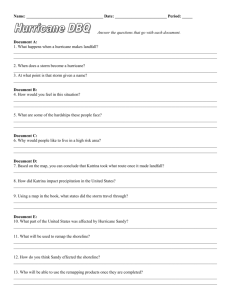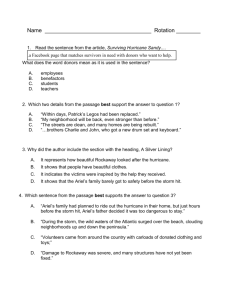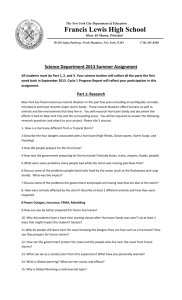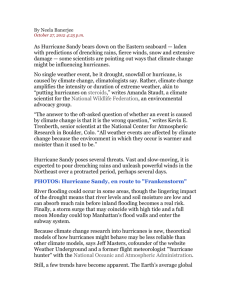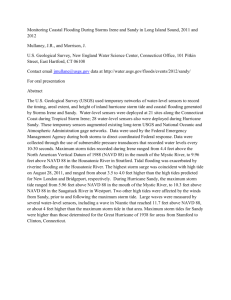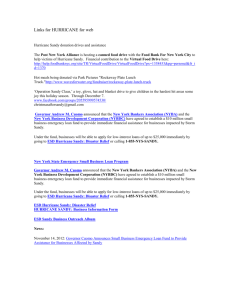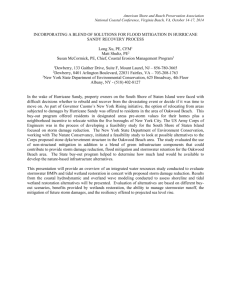Document 10525350
advertisement
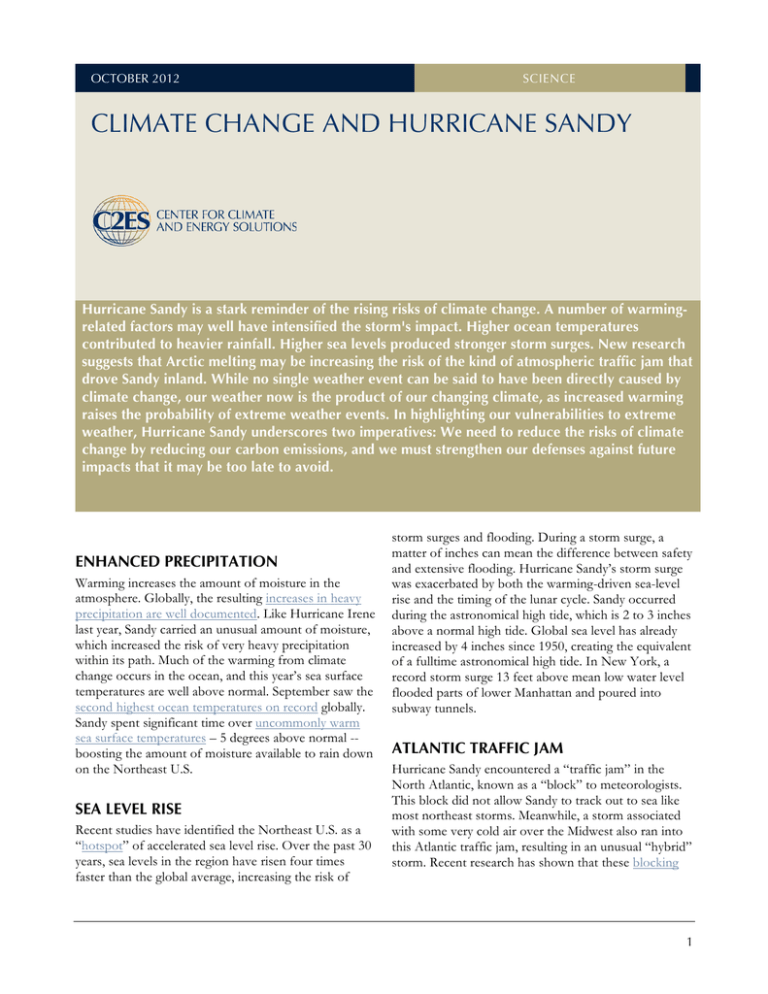
OCTOBER 2012 SCIENCE CLIMATE CHANGE AND HURRICANE SANDY Hurricane Sandy is a stark reminder of the rising risks of climate change. A number of warmingrelated factors may well have intensified the storm's impact. Higher ocean temperatures contributed to heavier rainfall. Higher sea levels produced stronger storm surges. New research suggests that Arctic melting may be increasing the risk of the kind of atmospheric traffic jam that drove Sandy inland. While no single weather event can be said to have been directly caused by climate change, our weather now is the product of our changing climate, as increased warming raises the probability of extreme weather events. In highlighting our vulnerabilities to extreme weather, Hurricane Sandy underscores two imperatives: We need to reduce the risks of climate change by reducing our carbon emissions, and we must strengthen our defenses against future impacts that it may be too late to avoid. ENHANCED PRECIPITATION Warming increases the amount of moisture in the atmosphere. Globally, the resulting increases in heavy precipitation are well documented. Like Hurricane Irene last year, Sandy carried an unusual amount of moisture, which increased the risk of very heavy precipitation within its path. Much of the warming from climate change occurs in the ocean, and this year’s sea surface temperatures are well above normal. September saw the second highest ocean temperatures on record globally. Sandy spent significant time over uncommonly warm sea surface temperatures – 5 degrees above normal -boosting the amount of moisture available to rain down on the Northeast U.S. SEA LEVEL RISE Recent studies have identified the Northeast U.S. as a “hotspot” of accelerated sea level rise. Over the past 30 years, sea levels in the region have risen four times faster than the global average, increasing the risk of storm surges and flooding. During a storm surge, a matter of inches can mean the difference between safety and extensive flooding. Hurricane Sandy’s storm surge was exacerbated by both the warming-driven sea-level rise and the timing of the lunar cycle. Sandy occurred during the astronomical high tide, which is 2 to 3 inches above a normal high tide. Global sea level has already increased by 4 inches since 1950, creating the equivalent of a fulltime astronomical high tide. In New York, a record storm surge 13 feet above mean low water level flooded parts of lower Manhattan and poured into subway tunnels. ATLANTIC TRAFFIC JAM Hurricane Sandy encountered a “traffic jam” in the North Atlantic, known as a “block” to meteorologists. This block did not allow Sandy to track out to sea like most northeast storms. Meanwhile, a storm associated with some very cold air over the Midwest also ran into this Atlantic traffic jam, resulting in an unusual “hybrid” storm. Recent research has shown that these blocking 1 CLIMATE CHANGE AND HURRICANE SANDY OCTOBER 2012 events and fall cold outbreaks are related to sea ice loss in the Arctic. In short, open water in the arctic helps break down the barrier between high- and mid-latitude weather, which increases the risk of cold outbreaks and blocking events. Hurricane Sandy seems to have tracked into the middle of one of these unusual meanders in the jet stream. While this is an evolving field of research and these conditions could have occurred in the absence of climate change, there is growing evidence that climate change is increasing the risk of extreme atmospheric arrangements. VULNERABILITY Hurricane Sandy provides important lessons about our vulnerability to the kinds of extreme weather likely to become more common in a warming world. Our levees, sea walls and other infrastructure were built to cope with the extreme weather risks of the 20th century. Sandy is offering an opportunity to see where we fall short in preparations for the 21st century. The Center for Climate and Energy Solutions (C2ES) is an independent nonprofit organization working to promote practical, effective policies and actions to address the twin challenges of energy and climate change. 2101 WILSON BLVD. SUITE 550 ARLINGTON, VA 22201 703-516-4146 Center for Climate and Energy Solutions C 2ES.O RG 2
